.png) RHODESIAN SECURITY FORCES
RHODESIAN SECURITY FORCES
.png)
.png) RHODESIAN SECURITY FORCES
RHODESIAN SECURITY FORCES
.png)
Rhodesian Corps of Military Police
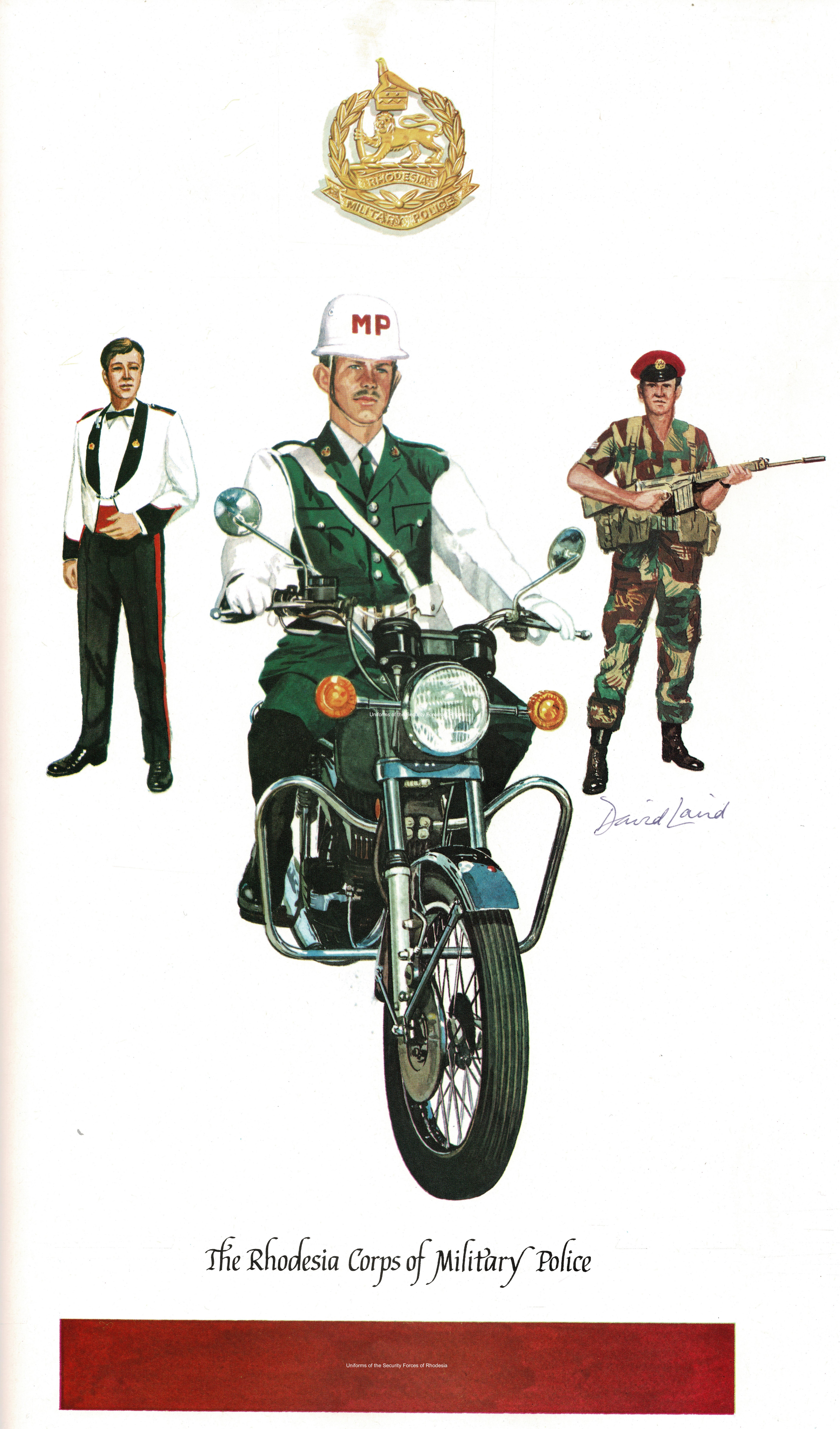
The motto of the corps is "Exemplo Ducemus" - "by example we lead". This motto indicates the nature of the duties of the Military Police; namely discipline, the prevention and detection of crime and the punishment of offenders. On 1977 September 27th, the Military Police adopted the "The Watch Tower" (or "Hoch Heidecksburg", originally a German Army marching tune from 1912 by Rudolf Herzer) as their Regimental march. Click on controls below to play. |
In 1939, the Rhodesian Air Force raised an Air Force Police Unit to uphold discipline within its expanding force. This unit carried out its duties until 1941 when it was transferred to the control
of the Army. It then became part of the Rhodesian Air Force Police (M.A.F.P.) and was the predecessor of the Rhodesian Corps of Military Police.
The MAFP had its headquarters at Defence Headquarters in Salisbury. Detachments were established at Salisbury, Bulawayo, Gwelo, and Umtali. The overall command was led by a Provost Marshal at Salisbury HQ and a Deputy Provost Marshal in Bulawayo, with Assistant Provost Marshals at Gwelo and Umtali. On August 9, 1943, the Southern Rhodesia Military and Air Force Police Reserve was formed as an active part-time reserve for the regular force. The regular and reserve forces were responsible for maintaining discipline within the Army and Air Force, policing military and air force units, and managing military operations. By the end of 1944, the combined strength of the regular and reserve units was 187 officers, N.C.O.s, and men. All units of the S.R.M.A.F.P. and Reserve were disbanded in 1945. In October 1951, the Southern Rhodesia Corps of Military Police (S.R.C.M.P.) was reformed as a territorial unit within the Territorial Forces. Captain R.R. Harris was appointed as its commander, and its headquarters were established in Salisbury with companies in Salisbury (No. I Company), Bulawayo (No.2 Company), and detachments in Umtali and Gwelo. The Corps recruited its regular cadre of instructors and administrative personnel from the Staff Corps. On April 1st, 1956, the Corps was suspended for reorganization, and its role was assumed by the Military Police section of the Staff Corps. The Corps was reorganized within the Federal Army in 1958 with Provos Platoons at Salisbury, Bulawayo, and Corps H.Q. in Salisbury. The streamlined Corps was responsible for discipline within the Federal Army, policing of military units, and the control of the Bulawayo military prison. After the dissolution of the Federation, the Corps was re-established on February 21st, 1964, but was re-designated as the Rhodesian Corps of Military Police in June 1965. At this point, the Corps consisted of a headquarters element under a Provost Marshal and No 1-2 Sections with an Army detention barracks. In 1967, the Corps was renamed the Rhodesian Corps of Military Police (Rh.M.P.), and from that date onwards, the role of the Corps steadily widened to include drug investigation, tracing absentees, call-up dodgers, vehicle checks, static speed checks, the training of all regimental police, as well as its usual disciplinary and investigative functions. By 1975, the Corps comprised Headquarters, Detention Barracks at Brady Barracks Bulawayo, a School of Military Police, a Special Investigation Department, plus Provost Platoons at Cranborne Barracks, Three Brigade (KG VI Barracks), Salisbury, the School of Infantry, Gwelo; an African detachment at Inkomo, and a small detachment at Depot, Llewellin Barracks. The Provost Marshal was based at Corp Headquarters, assisted by a Deputy Provost Marshal with Assistant Provost Marshals at each detachment. The Corps underwent a final name change in 1980 when it became part of the new Zimbabwe National Army, and the Corps became the Zimbabwe Corps of Military Police. The S.R. Military and Air Force Police were confined to the issue of metal shoulder titles bearing the initials M.A.F.P. in a straight line. The titles were made in white metal for the Air Force section and brass for the Military section. A larger sheet brass variant has also been detected which was manufactured in local workshops. When the S.R.C.M.P. was formed a brass cap badge was issued, this depicts the initials of the force within a wreath of oak leaves surmounted by a small lion and tusk. An up-swept title scroll is at the base of the oak leaves contains the word Rhodesia The cap badge was worn with red felt backing and was worn without collar badges. A straight brass shoulder title bearing the full initials of the force was worn on some forms of dress, additionally a curved cloth shoulder title, also showing the full initials of the Corps, was issued. During the period of the Federal Army military police units wore the Staff Corps cap and collar badges with red felt backing. After the Corps was re-established in 1964 a new cap badge was issued, the design being a lion and tusk encircled by an oak leaf wreath with a St. Edward’s crown above. Below the lion is a curved scroll bearing the word Rhodesia and beneath this is an up-swept title scroll which reads “Military Police”. Made in brass this cap badge was worn with half-size brass collar badges issued in pairs and both cap and collar badges continued in use until 1970. The final change was, with one exception, that of style rather than substance; in the new design the Zimbabwe bird replaces the St. Edward’s crown but the badge remains basically unaltered save for a “fleshing out” of the lion and a subtle change in the title scroll lettering. Provision was made in dress regulations for this new cap badge to be made in gold-colored anodised aluminum but this is not thought to have occurred and only highly polished brass examples have been found to date. This brass cap badge was worn with pairs of half-size gold-colored anodised aluminum collar badges. A gold-colored anodised aluminum shoulder title bearing the initials “Rh.M.P.” was also issued and worn. Miniature gilt collar badges were worn in pairs by Regular Officers on their mess dress and these collar badges were scarlet backed when worn by Warrant Officers and N.C.O.s in mess dress. During 1979-80 a cast brass version of the cap badge was issued but it is not thought to have been worn. Service Before Self, by M.P. Radford |

|

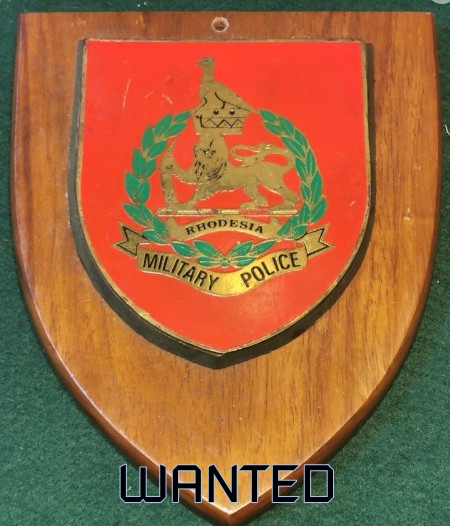
|
|
|
|
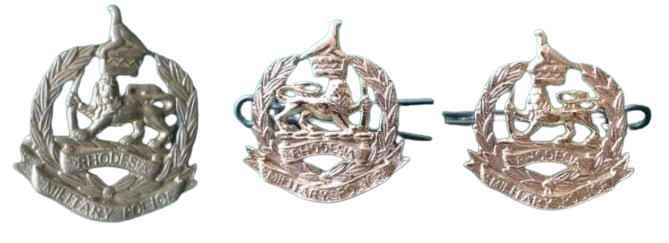
|
|
|
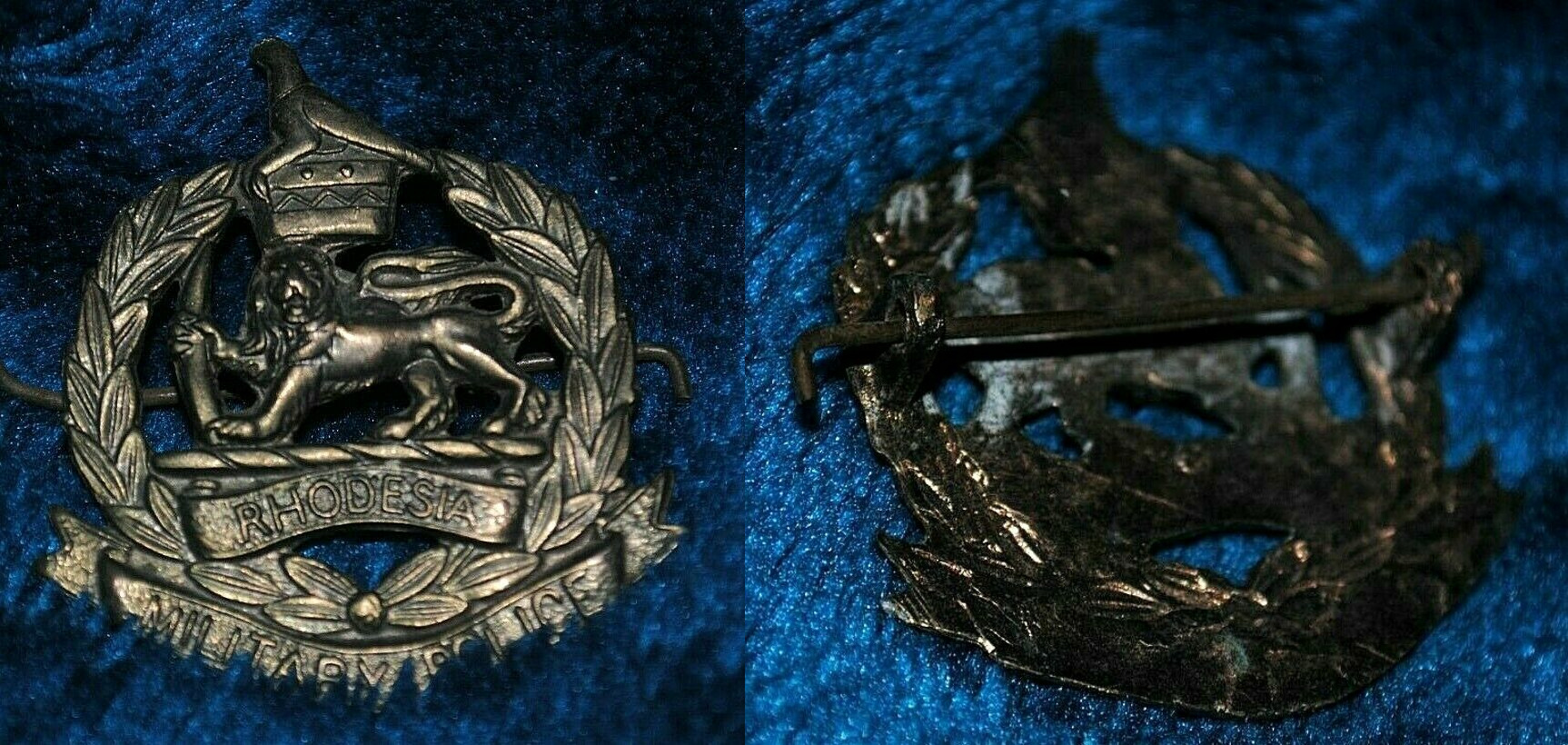
|
|
Kariba Manufacturing(1970-80) |
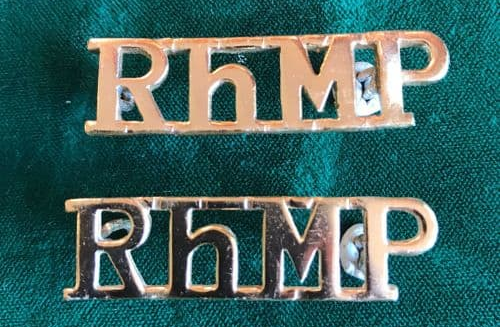
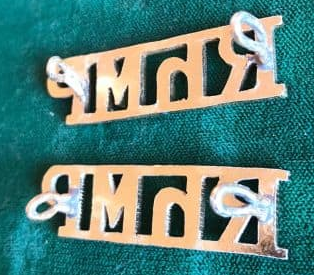
|
|
|
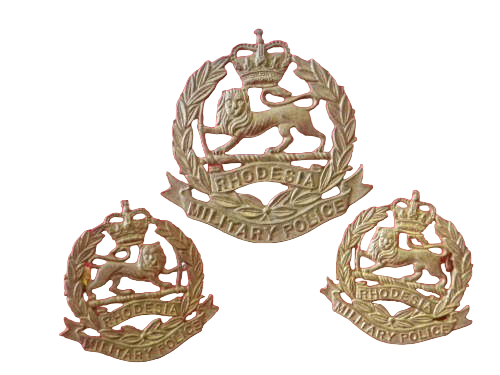
|
|
|
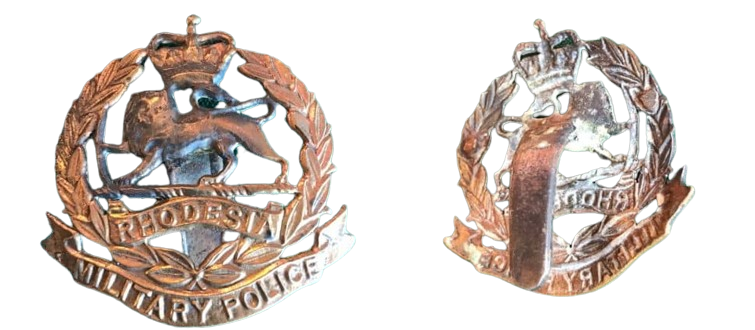
|
|
|
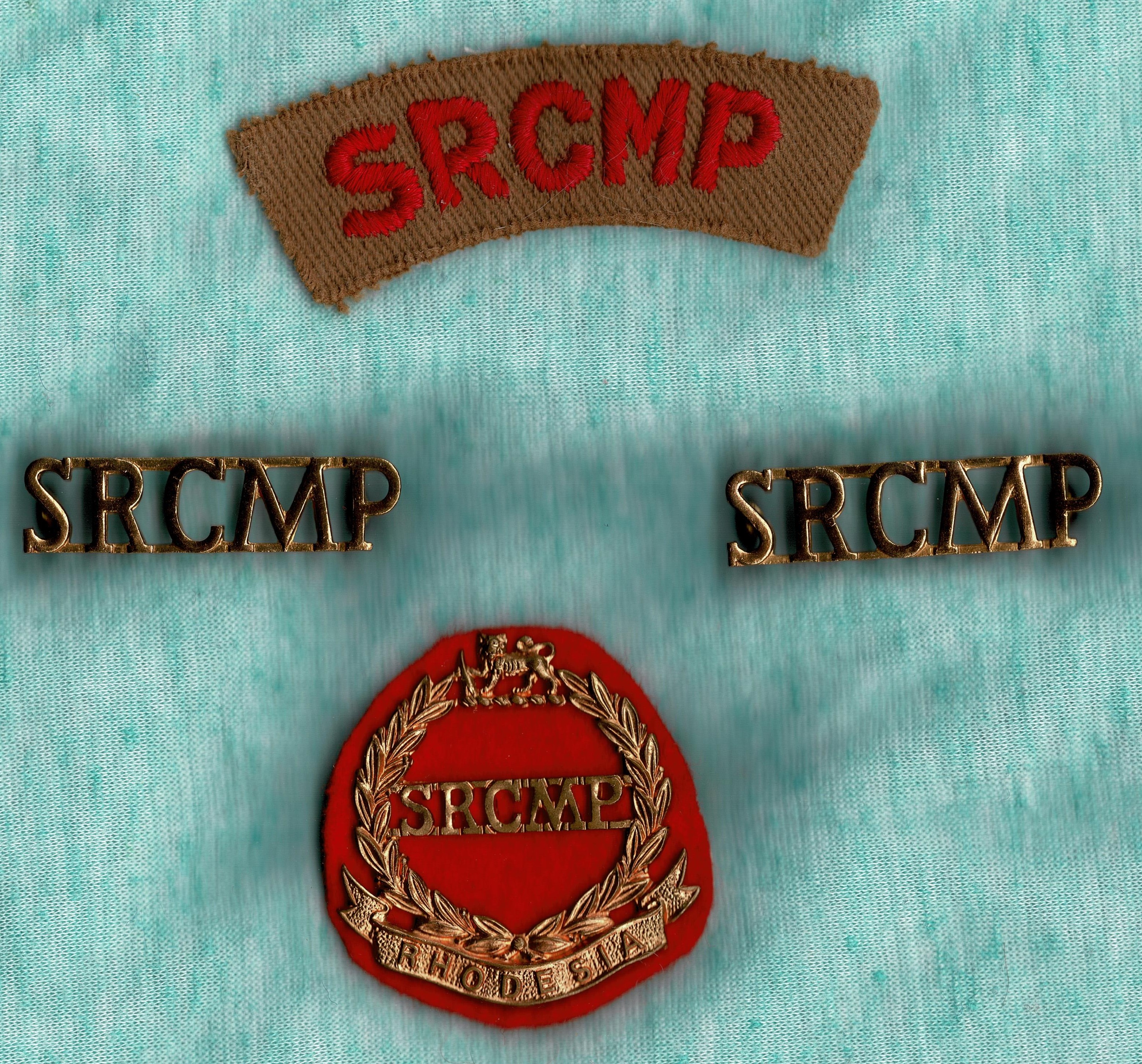
|
|
|